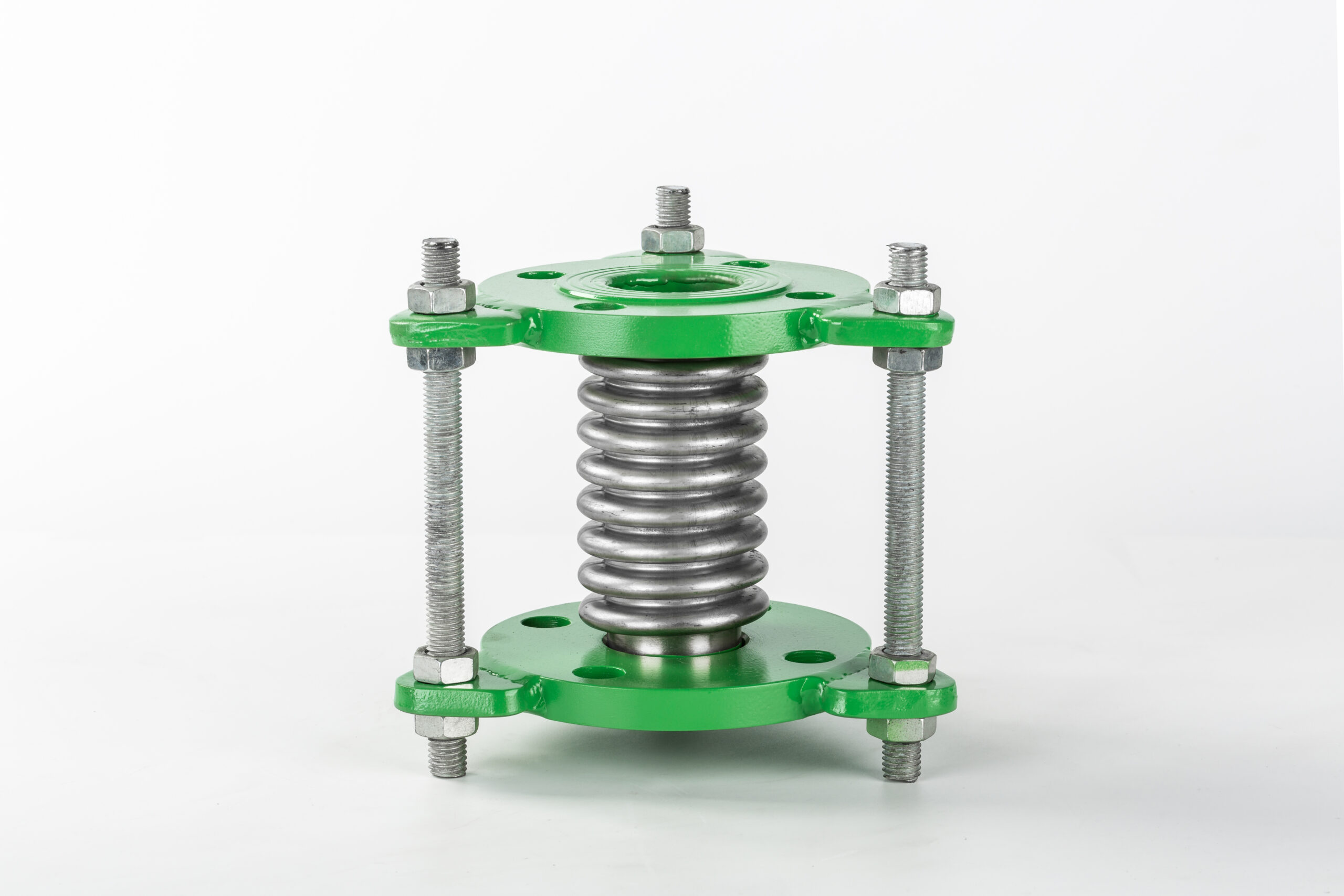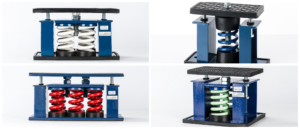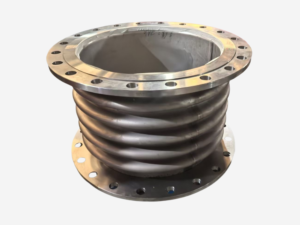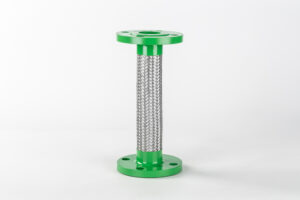A Corrugated Expansion Joint (also called corrugated bellows or metal bellows compensator) is a flexible component designed to absorb thermal expansion, contraction, and mechanical vibration in pipeline systems. Typically made from stainless steel or other corrosion-resistant metals, it uses a corrugated metal structure to provide flexibility and compensation capability.
During operation, pipelines can experience axial, lateral, and angular displacement due to temperature changes. Without compensation, this can lead to concentrated stress, weld cracking, or damage to supports. Corrugated expansion joints effectively absorb these displacements, reduce mechanical stress on the pipeline, and extend the service life of connected equipment.
They are widely used in power plants, chemical plants, refineries, metallurgical plants, shipbuilding, HVAC systems, and other industrial fluid piping systems.
What Are the Key Features of Corrugated Expansion Joints?
-
High Flexibility Compensation: The corrugated structure can absorb axial, lateral, and angular displacement simultaneously.
-
Vibration and Noise Reduction: Effectively isolates vibrations and reduces noise from pumps, compressors, and rotating machinery.
-
Excellent Corrosion Resistance: Made of 304, 316, or 321 stainless steel to withstand acids, alkalis, oils, and steam.
-
High Temperature and Pressure Resistance: Can operate reliably under high-temperature and high-pressure conditions.
-
Compact and Lightweight Design: Easy to install, transport, and handle in tight spaces.
-
Long Service Life: Designed for fatigue resistance, ensuring long-term operation with minimal risk of failure.
What Are the Technical Specifications of Corrugated Expansion Joints?
-
Material: Stainless steel (304, 316, 321, etc.) or other special alloys
-
Nominal Diameter (DN): DN25–DN3000 (customizable)
-
Working Pressure: 0.6 MPa–4.0 MPa (higher pressure customizable)
-
Operating Temperature: -196°C to +600°C (depending on material)
-
Connection Types: Flanged, welded, or threaded ends
-
Displacement Type: Axial, lateral, angular
Note: Exact specifications can be customized according to project requirements.
Where Are Corrugated Expansion Joints Commonly Used?
-
Steam pipelines and turbine exhaust in power plants
-
High-temperature and high-pressure chemical, petrochemical, and refinery pipelines
-
Oil and gas transportation pipelines
-
High-temperature pipelines in steel and metallurgical industries
-
HVAC heating and cooling water systems
-
Marine and shipbuilding pipelines
-
Water treatment and pump inlet/outlet pipelines
They are particularly useful in any pipeline system with temperature fluctuations, pressure changes, or mechanical vibrations.
How to Select the Right Corrugated Expansion Joint?
-
Determine the type of compensation required: axial, lateral, angular, or combination.
-
Check operating conditions: including temperature, pressure, and medium (steam, gas, chemical, etc.).
-
Select the appropriate material: 304, 316, 321 stainless steel for corrosion and temperature resistance.
-
Determine the required size and length: based on pipeline diameter and expected movement.
-
Choose connection type: flange, welded, or threaded depending on installation environment.
-
Include safety factors: allow extra capacity for displacement and pressure to ensure long-term reliability.
What Should You Pay Attention to When Installing and Maintaining Corrugated Expansion Joints?
Installation Tips:
-
Ensure the pipeline is properly aligned; do not stretch or compress the bellows to compensate for installation errors.
-
Install limit rods or protective covers if necessary to prevent overextension.
-
Avoid welding near the bellows to prevent heat damage.
-
When using flanged connections, tighten bolts in a cross pattern to apply even pressure.
Maintenance Tips:
-
Regularly inspect for signs of corrosion, deformation, or leakage.
-
Check guide supports and anchor points to ensure they function properly.
-
Clean debris or insulation that may restrict movement.
-
Replace damaged or worn joints immediately to prevent pipeline failure.




